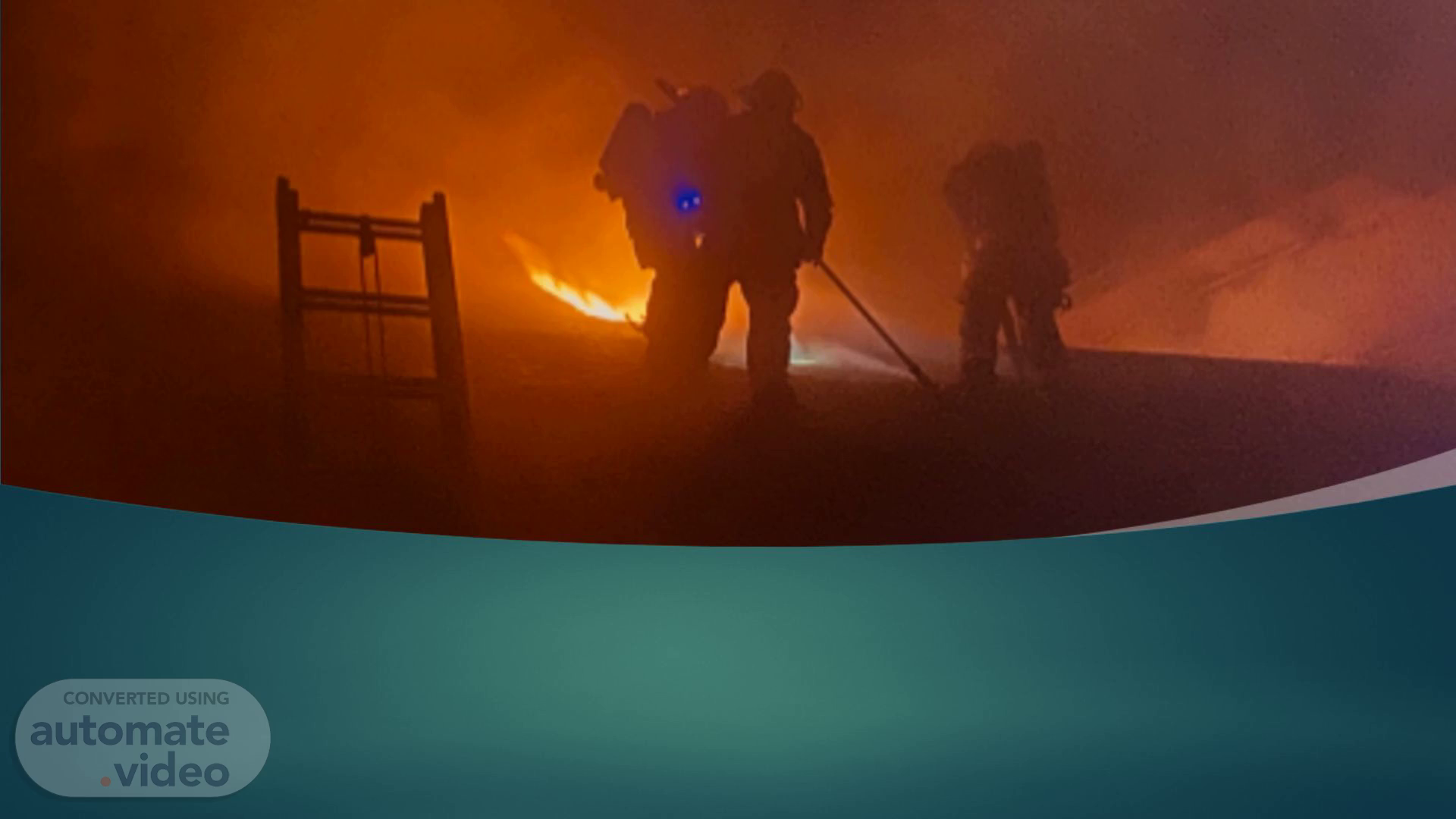
Odessa Fire Rescue Ventilation Class
Scene 1 (0s)
[Audio] Odessa Fire Rescue Ventilation Class. Odessa Fire Rescue Ventilation Class.
Scene 2 (8s)
[Audio] Objectives What is ventilation and why do we do it? Explain how fire behavior is influenced by door control, flow path and ventilation. Demonstrate coordinating ventilation with crews inside Identify the signs consistent with the Interior crew gaining the upper hand. Demonstrate proper vertical ventilation techniques..
Scene 3 (27s)
[Audio] What is Ventilation? It's the planned and systemic redirection and removal of fire, smoke and gases from the structure..
Scene 4 (36s)
[Audio] When do we ventilate? Ventilation occurs as part of an interior offensive attack. Coordination between fire attack, search and rescue and ventilation crews are based on conditions inside the structure Ideally ventilation occurs once the fire attack crew begins to put water on the seat of the fire. If done correctly it produces an ideal situation for everyone inside.
Scene 5 (1m 0s)
[Audio] Why do we ventilate? The reason we ventilate is to assist with operations of both suppression and search and rescue. With proper ventilation crews have a greater chance of saving a life , limiting fire damage and preservation of property.
Scene 6 (1m 16s)
[Audio] Flow path The path between where the fire is and where the fire wants to go. Uncontrolled flow paths can lead to rapid fire development and flash over. Time to Flash over Legacy Fires- 29:25 Modern Fires- 3:40 Firefighters leaving a door open, breaking a window or venting the roof before interior crews are ready can create undesired flow paths..
Scene 7 (1m 43s)
[Audio] Flow path cont: The goal during fire suppression should be to keep the fire either ventilation limited ( limits the fires access to air) by controlling the flow path or limited fuel (application of water).
Scene 8 (1m 58s)
[Audio] Door Control Why do we do it How do we accomplish door control.
Scene 9 (2m 8s)
[Audio] Door Control cont: Door Control is an initial action to prevent rapid fire development. If you can limit the amount of air inlet you limit the fire's ability to grow. Once crews get water to the seat of the fire and " Gains the upper hand" , then the door may be fully opened to assist in ventilation. What is " Gaining the Upper Hand" Cooler readings on the TIC Smoke changing from dark to white Water returning as droplets and not steam..
Scene 10 (2m 36s)
[Audio] Coordinated attack In order to successfully coordinate operations, information needs to be relayed between crews assigned initial attack and crews assigned ventilation. This will include the following Location of the seat of the fire Fire involvement observed interior Interior crews progress Where to place the PPV Fan Where and when to cut your hole How big should the hole be When to punch through to create your chimney effect COMMUNICATION.
Scene 11 (3m 6s)
[Audio] Safety Consideration Compromised roof Excessive pitch or Grade of roof Overhead obstructions Fire location Weather conditions.
Scene 12 (3m 14s)
[Audio] Tools to Consider Roof Ladders Saws 6-8 foot Hooks Trash Hooks Haligan Axe TIC PPV Fan.
Scene 13 (3m 24s)
[Audio] Types of basic ventilation Horizontal Ventilation Vertical Ventilation.
Scene 14 (3m 31s)
[Audio] Horizontal Ventilation Natural Ventilation Uses pressure created by the fire and atmospheric pressure to remove heat and smoke. Mechanical Ventilation Uses fans in the form of positive pressure (outside the structure) or negative pressure (inside the structure) Hydraulic Ventilation The use of a hose stream directed outside the fire room to create negative pressure..
Scene 15 (3m 57s)
[Audio] Natural ventilation. Natural ventilation.
Scene 16 (4m 8s)
[Audio] Positive Pressure Ventilation. Positive Pressure Ventilation.
Scene 17 (4m 19s)
[Audio] Negative pressure Ventilation. Negative pressure Ventilation.
Scene 18 (4m 30s)
[Audio] Hydraulic Ventilation. Hydraulic Ventilation.
Scene 19 (4m 40s)
[Audio] Vertical Ventilation. Vertical Ventilation.
Scene 20 (4m 49s)
[Audio] Vertical Ventilation Vertical Ventilation is accomplished by going to the roof and cutting a hole in the top of the affected area. This creates a chimney effect that if done properly will draw out the heat and smoke above the fire room. OFR typically uses the 4x4 cut 4X4 holes can always be extended or an additional one cut if interior crews calls for it..
Scene 21 (5m 11s)
[Audio] The decision to enlarge a hole is based on interior crews Do they have adequate water? Do they need additional relief from heat, gases, smoke or steam? CAUTION! Creating a larger vertical ventilation hole with the absence of water application can create a larger fire and cause conditions to worsen for interior crews..
Scene 22 (5m 32s)
[Audio] 4 x 4 cut. 4 x 4 cut. _weeq e6P!H.
Scene 23 (5m 39s)
[Audio] Vertical Ventilation off the Apparatus Preform self size up Initial safety concerns- Roof type, Grade, Overhead, Footing, Weather Identify fire location Establish point of access and egress Identify tools needed Initial roof access- Sounding for safety, Peaks, Ridges, Vallie's Determine hole location as close to the seat of the fire Communicate- Interior and Command Cut and get off the roof safely.
Scene 24 (6m 4s)
[Audio] Conclusion There are two major types of ventilation However, there are many different variations to each ventilations. It is your job to understand these and be ready for whatever command calls for on the fire ground. Your safety is our number one priority, if you feel something is not right or is unsafe say something..